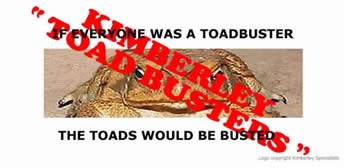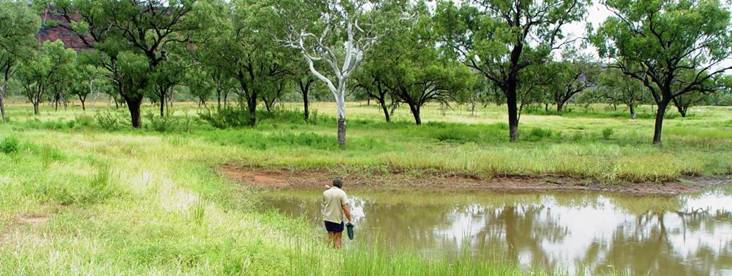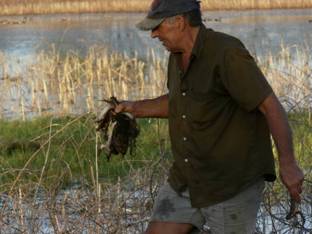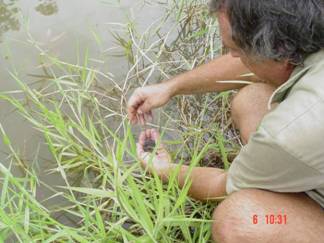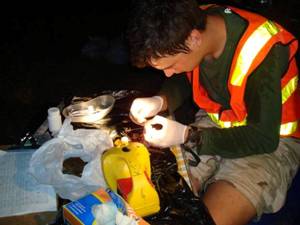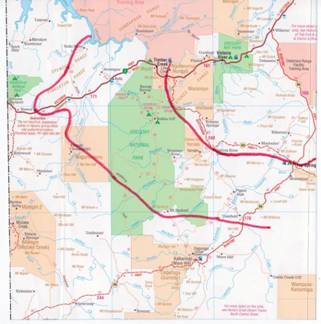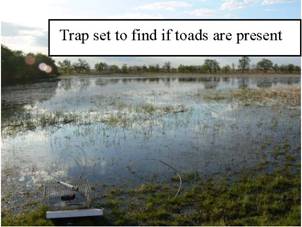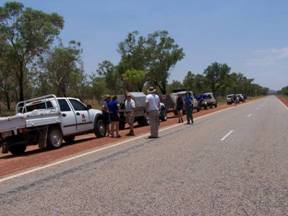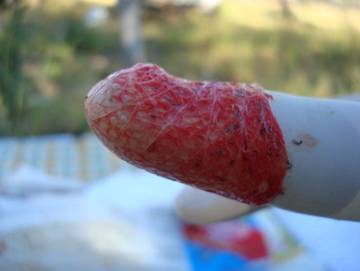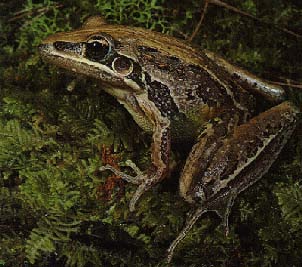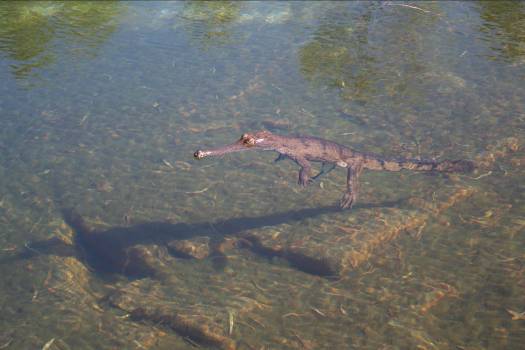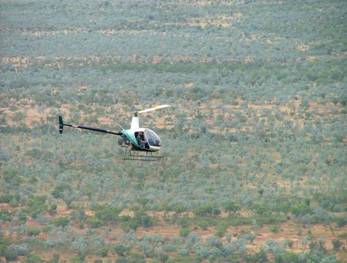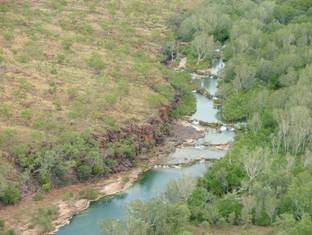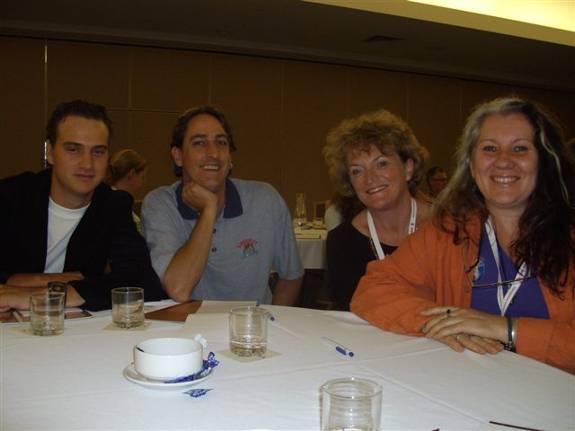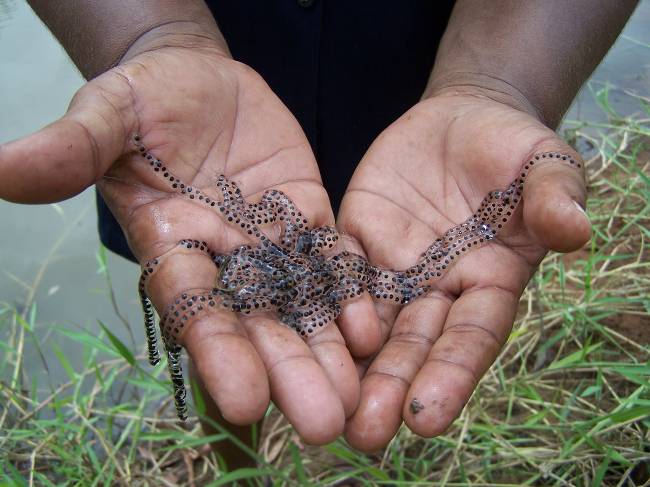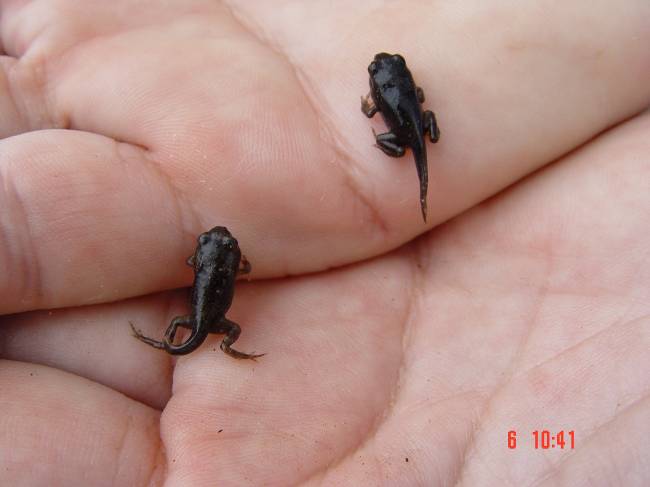A heartfelt cry from the Kununurra Community to the Nation. We will Stop the Cane Toads getting into WA! |
 |
 |
 |
 |
 |
|---|
KIMBERLEY TOAD BUSTERS NEWSLETTER No.24 05/02/2008 By Sandy Boulter (Volunteer Cane Toad Educator and Coordinator of the Perth based Friends of the Kimberley Toad Busters) and Lee Scott-Virtue (President and Volunteer Field Coordinator for the Kimberley Toad Busters)
WWW.CANE TOADS.COM.AU The Cane Toad is a Key Threatening Processto the Australian Nation Declared by the Federal Government 12 April 2005 This Newsletter is produced by Kimberley Specialists In Research Inc in conjunction with Kimberley Toad Buster Inc. Kimberley Specialists, a founding member of the Kimberley Toad Busters, continues to support the campaign against the cane toad by raising funds. KSR and KTB are tax deductible entities. IF EVERYONE WAS A TOADBUSTER kimberleytoadsbusters@canetoads.com.au www.kimberleyspecialists.com.au kimberleyspecialists@westnet.com.au WE NEED A NATIONAL CANE TOAD THREAT ABATEMENT PLAN! WE NEED A WA GOVERNMENT ENDORSED CANE TOAD MANAGEMENT PLAN FOR THE KIMBERLEY! KTB 2008 DVD Released: Contact Sandy on mobile 0427 508 582 or email us for a copy WHO SAID THIS? “Cane toad late stage tadpoles are not poisonous, so it is untrue to say that cane toads are poisonous in all stages of their life cycle.” “Who managed to lose their car keys in a billabong and how did the toadbusters get out of that one???” “Why does a cane toad invasion cause an initial large jump in frog numbers?” |
Read on to find out…. "It is important to recognise that the pristine terrestrial and aquatic habitat systems of the Kimberley are already under threat. Current land-care and resource management policies undertaken by land and resource managers have had a detrimental impact on Kimberley bio diversity. Most of our plant and animal biodiversity is in a fragile state. The impact of the cane toad, if allowed to happen, literally will destroy one of the last unique biodiversity wilderness frontiers in Australia ," Lee Scott-Virtue, Kimberley Specialists. Contents KTB 2008 DVD RELEASE KTB Honour Box: Dean Goodgame CANE TOAD AND PARASITE FRONT LINES WHY PARASITE RESEARCH IS IMPORTANT LYALL GRIEVE: SMALL REPTILE IMPACTS BY CANE TOADS TRIP REPORTS: DAVE WOODS LAKE EYRE BASIN COMMUNITY ADVISORY GROUP AND CANE TOADS VERTEBRATE PESTS CONFERENCE Resolutions Sandy Boulter Report AGENTS OF DECLINE Sarah Brett Report Native Frogs Meet Cane Toads: Del Collins with photos KTB Honour Box: Dean Goodgame
Previous KTB Honour Box Recipients: Sharon McLachlan, Del Collins, Trevor Dutoit CANE TOAD AND PARASITE FRONT LINES
Jordy sampled toads from 54 different locations just behind the westerly moving front line cane toads of which:
To date Jordy has found that:
WHY PARASITE RESEARCH IS IMPORTANT There is a big debate amongst cane toad and frog research scientists about whether or not the parasites we are finding in front line cane toads came from South America with the cane toad, or caught the parasite in Australia, and if so was it caught from our native frogs? This debate is an important one if parasites are to be considered safe to use to control and weaken front line colonising cane toads. From Alex Hyatt of CSIRO at the Darwin Conference and Mike Tyler from Adelaide University since the Darwin conference, we know that the original 103 cane toads imported from Hawaii (they had come from South America to Hawaii) into Queensland were not released in Australia, it was their progeny that were released as metamorphlings because of the concern that the imported adults might have unwelcome but undiagnosed disease(s). We have been further informed that the metamorphlings could not have caught parasites from the breeding cane toads. Lyall Grieve Cane Toad Science Lyall Grieve’s abstract for the Darwin Conference was not accepted this time. Lyall’s work is critically important unique research, which is showing the impact of colonising cane toads on small Kimberley reptiles and makes field observations important for biodiversity baseline data. THE IMPACT OF THE CANE TOAD (BUFO MARINUS) ON THE SMALL REPTILE FAUNA OF THE KIMBERLEY REGION Lyall Grieve, Macquarie University 46 Powell St Blaxland, NSW 2774. This study is a Masters project conducted through Macquarie University Sydney, with the assistance of Kimberley Specialists in Research Inc and the Kimberley Toad Busters Inc volunteers. The project aims to determine the impacts, which Bufo marinus may have on the small reptile fauna of the Kimberley region, focusing on the Western Australian border region and the frontline toad migration. Using a presence/absence study design of trapping and sampling, a species composition and abundance investigation is underway in areas inhabited by toads, and similar habitats toads have not yet reached. Gut contents of Cane Toads are being analysed in order to infer what composition of prey items are consumed. This research may indicate a combination of competition and predation effects on the fauna of the same habitat and size range. The results of this study will help understand the interactions and impacts this invasive species will have on the Kimberley reptile communities. In conjunction with the research into the impacts of the Cane Toad, trapping and visual observations of various localities within the region are underway to further understand the seasonal variations, distributions and species inventories of remote Kimberley ecosystems . Trip Reports by Dave Woods These reports show how some of our reconnaissance and weekend toadbusting works, the amazing efforts of our sturdy and hardy regulars, and visitors and tourists alike, sometimes who first meet on a toadbust and why finding one toad can be as good as finding hundreds!!
Date: 3 rd May 2008 Team: Tim Leary, Karen Jensen and Ty Schnarrs Tim and team first busted the Bullo River Driveway turkeys nest dam and caught forty four toads, sixteen of which were female. They caught 44 toads at Tin Shed Dam, eleven of which were female. It is most important that we keep working these areas in the western section of the frontline.
Date: 13 th- 19 th May 2008 Team: Jordy Groffen and Rick van Roon
Date: 13 th- 19 th May 2008 Team: Wally Bearsby and Pat La Wally had traveled from down south to join us toad busting for a couple of weeks. He based himself at as joined by Pat on the third night. Pat had also travelled up here from the southwest. They busted the scrapes area to begin with and over three nights got a total of one hundred and twenty two toads, sixty nine of which were female. Seventeen juveniles were also caught. The next two nights they busted King Billabong catching a total of two hundred and ninety four toads. One hundred and eighty two were female. Only two juveniles were picked up on the 19 th of May from this area. After coming into town and getting more supplies on the 20th of May they headed back out to keep on busting King Billabong. Over the next three nights they caught another five hundred and forty three toads, three hundred and forty six of which were female. They also picked up six hundred and eighty four juveniles from this area. Their grand total was nine hundred and sixty five mature toads, and seven hundred and four juveniles. Four toads were found to be carrying leeches from King Billabong. Pat and Wally made a great team and this proves how effective a small group can be out in the field. Their efforts were greatly appreciated. King Billabong will require ongoing work over this dry season. Date: 19 th- 20 th May 2008 Team: Lee Scott Virtue, Sharon Mc Lachlan, Dave Woods Kylie Hill (Work Readiness), Paul Mavromartis ( Work Readiness), Xavier( Win TV), Danielle Parry(ABC NT), Maryanne Winton, Trixie Winton, Dave Pethrick, Crystal Pethrick, Faith Pethrick, Joel Pethrick, Chantelle Lawson and David Ward KTB coordinator Dave Woods along with Paul and Kyle who were students from the Kununurra District High School’s Work Readiness program and the Win TV crew met Indigenous Cane Toad leader Maryanne Winton to toadbust on Bullo River Station.
We spent the afternoon doing reconnaissance around homestead Creek, and TV interviews. Franz, the station owner, told us that the staff had been hearing lots of toads calling mainly from Homestead Creek area. The rest of the team then joined the bust and caught two hundred and sixty five toads of which one hundred and forty three were female, and a further one hundred and fifteen juveniles. Lee noted that there were lots of Rocket frogs in Homestead Creek. The team saw twelve Keel back snakes and one python. They also found one dead Night Heron and one dead small Heron probably from cane toad metamorph or juvenile ingestion. This area will require more busting over the coming months. Date: 24 th May 2008 Team: Jordy Groffen and Tim Leary Jordy and Tim headed out into the Saddle Creek dam and turkeys nest to check in daylight for any recent signs of breeding at these locations. They found none. That night they busted these two areas finding thirty two toads at the dam, fourteen of which were female. They also picked up twenty four juveniles. At Saddle Creek turkeys nest dam only one mature male was found and three juveniles. This was great news, because it showed that numbers had significantly dropped at this location, since the last time we busted there. Jordy and Tim then went back out to the highway to check Fish Ck. They checked downstream and found that the water had gone leaving a dry creek bed. There was only one pool left which is next to the road. From this roadside pool they caught twelve mature toads, five of which were female. They also picked up five juveniles. Their last destination for the night was Tin Shed Dam where they found only three toads, one female. It appears there has been a steady decline of toads at this location as a result of the KTB toadbusting efforts, which is great to see. We will continue to keep pressure on this area to ensure toad numbers are kept to minimum over this dry season.
Date: 31 st May 2008 Team: Tim Leary, Karen Jensen, Ty Schnarrs Tim’s team busted the Southern end of Bullo Rivers driveway. They did a fantastic job picking up one hundred and forty three mature toads, of which ninety six were female. They also caught twenty nine juveniles. Tim and his team will be returning regularly to this location over the coming months. His dedication to Kimberley Toad Busters and saving our wildlife is admirable.
Victoria River District Helicopter Reconnaissance Trip 6th June
Team: Jordy Groffen, Dave Woods The purpose of this trip was to check the upper reaches of the Wickham River, Broad Arrow Ck and the Humbert River for signs of toads.This area is in Gregory National Park so a permit was obtained and permission granted by Kate Schmitt from NT Parks and Wildlife. Kate is the senior ranger for this area for Gregory National Park and is based at Timber Creek. Our first destination was on the Wickham River near Midnight Creek junction. It took over an hour to reach this area and after finding suitable toad habitat, we put the helicopters down. We found no evidence of toads. We then flew to upper Broad Arrow Creek and landed on the southern arm. This was good toad habitat but again no evidence of toads. Then onto the upper reaches of the Humbert River and again no sign of toads This trip was three and a half hours and great distances were covered. As we found no evidence of toads in these three locations, it makes it hard to define exactly where the toad frontline is in this area. To access this area on the ground is very difficult as there are very few tracks and it is an extremely remote part of the national park. Even quad bikes would be of little use, as it is very rugged terrain. The only realistic option to help us get a more accurate idea on where the toad frontline is in Gregory National Park is helicopters to check further downstream on each of these systems. This is expensive and may even require a seperate trip on each waterway stopping in multiple locations. Thank you to Kate Schmitt from NTPWS, for granting us permission to carry out this trip with such short notice. BUNTINE HIGHWAY Reconnaissance Trip Top Springs to Wave Hill and Mt Sanford to Wave Hill 4th -6th June 2008 Team: Dave Woods and Jordy Groffen Jordy and I arrived at Top Springs just before sunset on Wednesday afternoon. I fuelled up, spoke to people at the roadhouse and left them brochures and bookmarks for the tourists passing through. On our way to Wave Hill we checked all rivers and creeks and our findings are as follows;
Jordy Took a sample group of toads from each location and found no evidence of parasites in toads from these sites. The next day we drove north from Wave Hill to Mount Sanford Homestead and along the way we GPS’d all waterholes and turkey nests. At night-time we did the drive in reverse and checked all locations for any evidence of toads. Our findings are as follows:
LAKE EYRE BASIN COMMUNITY ADVISORY GROUP
Lake Eyre Basin Community Advisory Committee “Cane Toads and Redclaw Crayfish in the Lake Eyre Basin — A Community Survey ........Canetoads The CAC has previously discussed the possibility of a community survey in the basin to dertermine the current distribution of Cane Toads; They referred the matter to the LEB Scientific Advisory Panel (SAP) for its 16 th meeting in March 2007. The SAP discussed the matter and agreed that they see Cane Toads as a threat to larger water holes, and asked the CAC what would be required for the Basin community to help identify the spread of Cane Toads. The LEB Community Advisory Committee (CAC) and the South Australian arid lands (SAAL) NRM board discussed LEB Cane Toads at their joint meeting in Coober Pedy, SA, on 18 July 2007. Dr David Peacock from the SA Dept Water, Land and Biodiversity Conservation presented a preliminary proposal at thatmeeting for Australian Research Council funding for Cane Toad research, witha view to seeking supporting funds: ‘Toads in the desert: assessing and combating the invasion of Australia’s inland river systems by Cane Toads - preliminary ideas for an ARC Linkage Project Proposal' ( Rick Shine and David Peacock) The CAC resolved to keep Cane Toads on the agenda for future meetings, and discussed the matter again at its 15 th meeting (Teleconference, 21 August 2007). They resolved that a community monitoring project for Cane Toads in the LEB would be practicable and useful in collaboration with the Regional NRM Groups, regardless of whether the larger ARC linkage grant applicatioproceeds.” Vol has updated us on these minutes as follows: "As of June 2008 a project is being carried out to obtain a rapid estimate of the distribution of Cane Toads in the Queensland Lake Eyre Basin, and if possible the time it has taken for the Canetoads to reach their current distribution, utilising information sought from landholders in the Basin. The project, designed to augment the currently anecdotal and patchy information about Cane Toad distribution in the LEB, is a community survey of riparian landholders via telephone, email and postal contact. The project will produce a leaflet designed specifically for the LEB, to raise awareness of Cane Toads as a potential threat to native fauna and ecosystems, and to introduce people to the survey subject. The project is being conducted by Dr Mike Tyler of the University of Adelaide.” VERTEBRATE PESTS CONFERENCE DARWIN
KTB reports from 14th Australian Vertibrate Pest Conference Darwin 10-13 June 2008 There was a post conference cane toad forum of scientists and community groups. The forum resolution included that: 1) A nationally coordinated approach is required; 2) Field workers and scientists need to have a forum/office in which to collaborate (sharing of information and experiments); 3) A cane toad threat assessment is required; 4) Product assessment' within three years based on identified objectives is required; 5) A national plan for reduction and control of 6) A national plan should comprise a multiple research activity approach; and 7) Increased funding is needed CANE TOADS ARE AGENTS OF DECLINE Sandy Boulter New Facts and Lots of Feral Species “Cane toad late stage tadpoles are not poisonous, so it is untrue to say that ane toads are poisonous in all stages of their life cycle”, Robert Capon from t he Institute for Molecular Bioscience, The University of Queensland in presenting his paper, “Cane Toad Chemical Ecology: What We Thought We Knew, What We Know Now and What We Should Know”. And from an urban perspective, “It is estimated that there are 1.3 million households with cane toads in Australia,” David Dall presenting his paper, “A Spray Formulation For Humane Lethal Control Of Cane Toads." These were two of the interesting observations made to the 14 th Australian Vertebrate Pest Conference Darwin 10- 13 June 2008. VPCs are held every th ree years and this one was organised in conjunction with the University of Canberra based Invasive Animals Cooperative Research Centre and the NT Department of Natural Resources, Environment and the Arts. Feral foxes, starlings, wild dogs, mallard ducks, mice, goats, camels, pigs, rats, rabbits, cats, fish, bell minors, deer and cane toads were all discussed and these were just some of the vertebrate pests in Oz! We heard about invasive monkeys in Puerto Rico, possums and stoats in New Zealand, and brown tree snakes in Guam. We heard how feral species are agents of decline. Dealing with Feral Species We heard about many approaches including management and control, population suppression, eradication, monitoring techniques, commercial harvesting of pest species, genetic control, oral toxicants, humane disposal challenges, community campaigns, economic impacts, biological control, baits, trapping, odour repellants, contraception, vaccines, toxins, radio tracking, parasites and much more…
Exciting New Research Grinds to Halt With Lack Of Further Funding One of the more interesting cane toad research papers was presented to the conference by Robert Capon and Andrew Hayes. (Following a request from Andrew Hayes, the KTBs collected and sent 500 frozen cane toads back toQueensland from the western colonising front earlier this year.) Rob has been working with Mike Tyler in South Australia on chemistry based research into the bufo toxin that has shown that the bufo toxin:
The p ptential for this research has a lot of us excited at the prospects for developing effective control and management of cane toads on the ground but sadly the funding for this incomplete research dries up in six weeks! We look for some government leadership in finding further funding for this important research. KTB Presentations on Volunteering and Cane Toad Science KTBs two papers presented to the Cane Toad held as an adjunct to the conference were well recieved and the KTB's 2008 DVD was given out to each of the participants in this forum. Our papers were by: Sandy Boulter: Volunteering for the Kimberley Toad Busters Inc Jordy Groffen: Lungworm in Cane Toads Close To The Front Line Sarah Brett gave an ex tempore review of cane toad euthanasing options, which identified a number of problems around this issue. Copies of the KTB presentations and our 2008 toadbusting DVD can be obtained on disc by sending a stamped addressed CD post package to Friends of the Kimberley Toad Busters Inc, 90 Murchison Street, Shenton Park, WA 6008. Elements of Successful Campaigns It seems that all the community feral species campaigns are more likely to be successful when there is :
Barriers to success in a feral species campaign were so well identified by Guy Ballard in his paper, “What’s Stopping Effective Wild Dog Management in North East NSW?” that he might have well been describing the KTB experience. Step nine in Sandy’s presentation to the conference added to Ballards experiences and together they show how lack of government leadership can severely and adversely impact on the potential outcomes from community groups. Conference REPORT BY SARAH BRETT …Both Jordie and Sandy presented papers, Jordy updating everyone on KTB's lungworm parasite project research, and Sandy on the achievements of the KTB Community volunteers. Both papers were very informative and well received, and Jordie did especially well considering English is not his first language. Well done both of you for being such impressive ambassadors for KTB. There was a wealth of information presented throughout both conferences, which was an excellent mode for networking with scientists, government agencies and others working in the field of cane toad research. The updates on the studies being done on the chemicals and toxins produced by the toads were particularly interesting, and I think gives us the best hope of finding something with which to either attract, or kill and affect tadpoles in waterholes. The fact that the funding for this research runs out in 6 weeks is very worrying. Professor Rick Shine, who is well known for his long-term research on toads, presented an overview of his studies to date. He explained his theories behind introducing young toads to a population that has not met toads before before, “teacher toads”, as they have shown in the lab that some creatures DO learn to avoid toads if they have eaten a small toad in the first instance. This is because small toads have less toxin in them, and may not always kill a creature that eats it.
|


